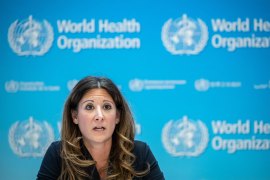Despite Safety Net, Many Uninsured Lack Access to Care
"Alarmingly large" numbers of uninsured adults do not receive necessary medical care, a study in the Oct. 25 issue of the Journal of the American Medical Association states, contradicting "the notion that the nation's uninsured can get needed services through various safety-net measures," the AP/Detroit Free Press reports. The study examined data from a 1997-1998 CDC survey of 223,128 adults, ages 18-64. Fourteen percent of those respondents lacked insurance. Furthermore, nearly 10% were "long term uninsured," meaning they had gone without insurance for at least one year (Tanner, AP/Detroit Free Press, 10/25). Specifically, the study criteria included: "inadequate access to a physician within the last 12 months due to cost, or a routine checkup for two years;" and "failure to receive adequate levels of preventive care for chronic conditions." The study, conducted by Harvard University researchers, found that overall, the uninsured are "significantly less likely" to have mammograms or Pap smears, hypertension and cholesterol testing or colon cancer screening. The research team's director, Dr. John Ayanian, associate professor of medicine and health care policy at Harvard Medical School and Brigham and Women's Hospital, said, "Alarmingly high proportions of long term uninsured adults in poor or fair health report forgoing needed care. These people -- particularly those with chronic medical conditions -- are a high-risk group for complications and early death." According to the study, uninsured women ages 50-64 were three times less likely than insured women in the same age group to have received a mammogram or clinical breast exam, while uninsured women ages 18-64 were three times less likely to have received a Pap smear within the last three years as insured women (Gorner/Japsen, Chicago Tribune, 10/25). In addition, 26% of the long term uninsured with hypertension or diabetes reported not seeing a doctor within the last two years. Costs prevented almost 26% of the long term uninsured and 21% of the short term uninsured from being able to see a physician. Only 8% of the insured said cost prevented them from seeing a doctor (Reuters/Philadelphia Inquirer, 10/25). Cost barriers "were greatest for women, blacks, the unemployed and those with low-incomes," the report notes. While the "uninsured may not be dying in the streets, ... they are more likely to die in hospitals than insured people," the Chicago Tribune reports. Because the uninsured often delay care, when they "finally do seek help, they show up with big problems" and often are hospitalized and "face an increased risk of death" because of their advanced conditions. Compared to those who reported their health as "excellent" or "very good," adults who reported "good, fair or poor" health were between two and three times more likely to have lacked insurance for at least one year. Ayanian concluded, "All groups in society who lack health insurance are at significant risk of bad health outcomes. There's clearly an indication for expanding services to children. But what we need to do is develop solutions through public or private means to provide better access to care, particularly low-income workers" (Chicago Tribune, 10/25). The JAMA report is available at http://jama.ama-assn.org/issues/current/rfull/joc00915.html
This is part of the Morning Briefing, a summary of health policy coverage from major news organizations. Sign up for an email subscription.





